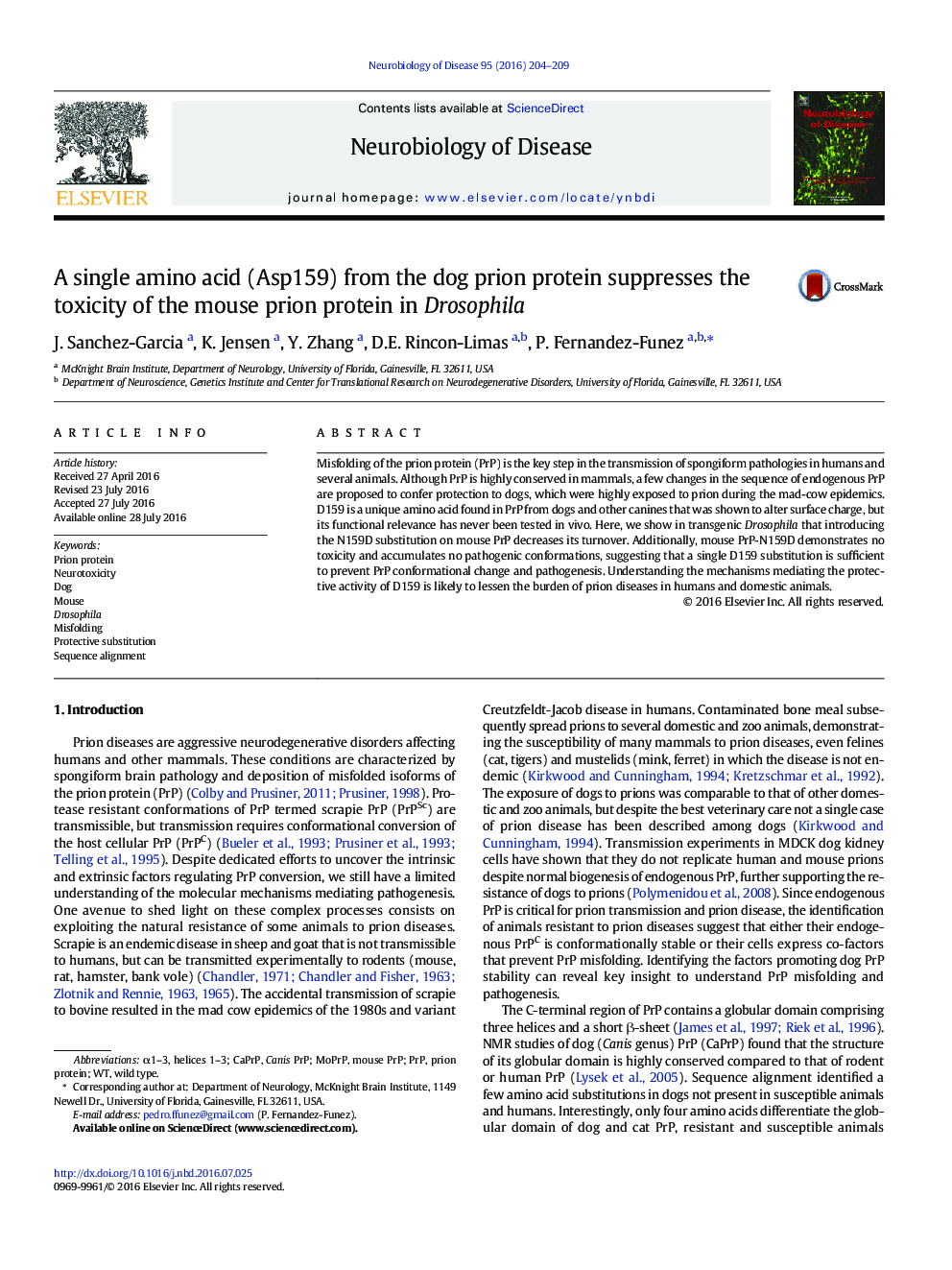| کد مقاله | کد نشریه | سال انتشار | مقاله انگلیسی | نسخه تمام متن |
|---|---|---|---|---|
| 3069246 | 1580627 | 2016 | 6 صفحه PDF | دانلود رایگان |

• Dogs and other canines are rare animals resistant to prion diseases
• D159 is a unique residue in dogs and canines that substitutes the conserved N159
• Introducing the N159D substitution in mouse PrP suppresses its conformational change and toxicity in Drosophila
• D159 is the key protective residue in dog PrP that provides conformational stability and confers protection against prions
Misfolding of the prion protein (PrP) is the key step in the transmission of spongiform pathologies in humans and several animals. Although PrP is highly conserved in mammals, a few changes in the sequence of endogenous PrP are proposed to confer protection to dogs, which were highly exposed to prion during the mad-cow epidemics. D159 is a unique amino acid found in PrP from dogs and other canines that was shown to alter surface charge, but its functional relevance has never been tested in vivo. Here, we show in transgenic Drosophila that introducing the N159D substitution on mouse PrP decreases its turnover. Additionally, mouse PrP-N159D demonstrates no toxicity and accumulates no pathogenic conformations, suggesting that a single D159 substitution is sufficient to prevent PrP conformational change and pathogenesis. Understanding the mechanisms mediating the protective activity of D159 is likely to lessen the burden of prion diseases in humans and domestic animals.
Journal: Neurobiology of Disease - Volume 95, November 2016, Pages 204–209